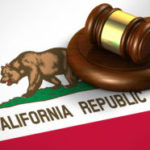
The CDTFA has updated an important regulation; one that affects all out of state retailers selling to customers in California. California Regulation 1684, “Collection of Use Tax by Retailers,” is not a new regulation, but it is one that needed many updates due to the Wayfair case. The CDTFA recently received approval from the Office of Administrative Law to publish the revised regulation.
In this two-part blog we will address the most important changes to the regulation. In this first blog we will discuss an out-of-state retailer’s registration and collection requirements in California. In the second blog we will discuss when an out-of-state retailer is no longer required to hold a California use tax permit (Certificate of Registration – Use Tax).
Let’s start with what hasn’t changed in Regulation 1684 (“R1684”). Any out of state retailer that has a physical nexus in California (an office, employees or representatives in the state, inventory, etc.) is required to obtain a use tax permit and collect use tax for their sales of tangible personal property into the state from their out of state location. When you have a physical nexus you are required to register for a Certificate of Registration – Use Tax and to collect and report the use tax to the state.
Now let’s talk about what’s changed in R1684. Effective April 1, 2019, California, like most states, is imposing an economic nexus threshold test that out-of-state retailers of tangible personal property need to be aware of. Let’s dive into what that means.
As you’ve learned from many of our blogs on economic nexus, each state has its own triggering threshold for when an out-of-state retailer is required to register and collect use tax in a state; California’s is $500,000 of retail sales of tangible personal property. As soon as a retailer exceeds $500,000 of sales of tangible personal property in California in either the preceding or current calendar year the retailer is required to register for a permit and collect and report use tax to the California Department of Tax and Fee Administration (“CDTFA”).
Let’s look at a few examples:
First example: An Idaho retailer (“Ida-Widget”), with no physical presence in California sells tangible widgets through its website to California consumers. In 2018, Ida-Widget sells more than $500,000 of widgets to California consumers, but made no sales of widgets in the first quarter of 2019 (January through March). Ida-Widget is required to obtain a California use tax permit and collect taxes for any sales made on and after April 1, 2019, because it had $500,000 in sales in 2018.
Second example: A Wyoming retailer (“Wyo-Gizmo”), like Ida-Widget has no physical presence in California but sells its gizmos through its website to California consumers. Wyo-Gizmo had less than $500,000 in sales to California consumers in 2018. But, in just the first quarter of 2019, Wyo-Gizmo sold $501,000 in sales into California. So, Wyo-Gizmo has surpassed California’s economic threshold and is required to register and collect use tax starting on and after April 1, 2019.
Third example: A Missouri retailer (“MO-Doodad”), like Ida-Widget and Wyo-Gizmo has no physical presence in California. MO-Doodad has less than $500,000 in sales to California consumers in 2018 and in the first quarter of 2019. So, MO-Doodad is not required to register and collect use tax in California on April 1, 2019. In fact, MO-Doodad doesn’t surpass $500,000 of sales until August 1, 2019. On August 1, MO-Doodad sold a $1,000 doodad that brought its total sales up to $500,500 in 2019. Therefore, MO-Doodad is required to register and collect use tax on all of its sales into California that are made after the $1,000 sale. This is because that is the sale that put them over the $500,000 threshold. If MO-Doodad sales another $200,000 of doodads in the third quarter 2019 they are required to report only the $200,000 of sales after the $1,000 sale.
In our next blog we will cover what Ida-Widget, Wyo-Gizmo and MO-Doodad are obligated to report when their sales into California drop below the $500,000 of sales of tangible personal property to California consumers.



















